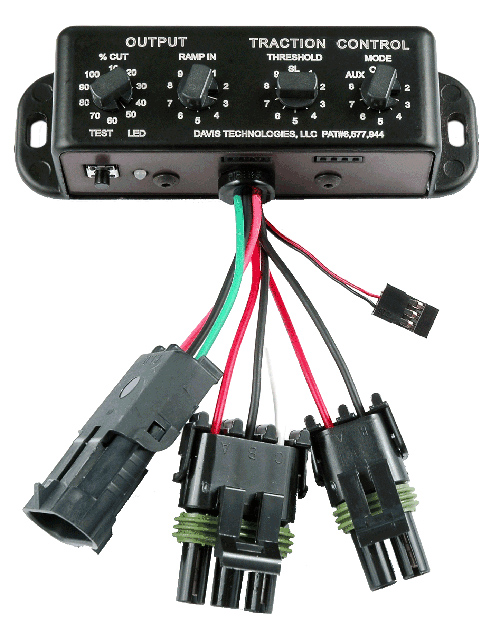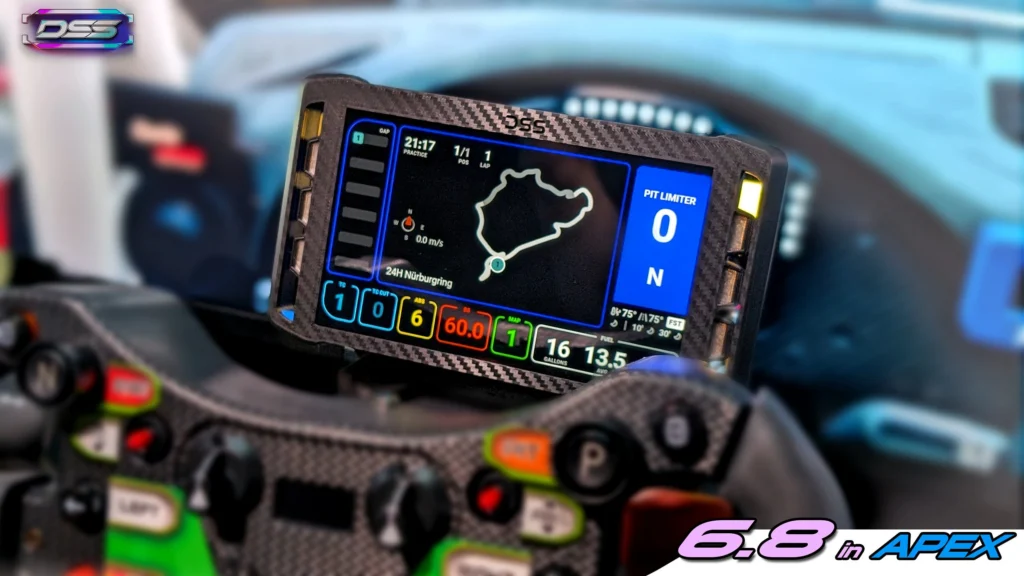Introduction
The deafening roar of engines filled the air as Mark prepared for the biggest race of his career. Despite having a powerful car and years of experience, his previous races had been plagued by one persistent problem—wheel spin at launch, costing him precious seconds and numerous victories. That all changed when a fellow racer suggested he try a traction control system from Davis Technologies. After installation, the difference was immediate and dramatic. His launches became consistent, his times improved, and within months, he was standing in the winner’s circle, trophy in hand.
This transformation isn’t unusual among racers who discover Davis Technologies and their revolutionary approach to solving one of racing’s most persistent challenges. For over two decades, Davis Technologies has been at the forefront of developing innovative traction control systems that help racers maintain optimal grip and maximize power delivery to the track. Whether you’re a weekend warrior at your local drag strip or competing in professional circle track events, Davis Technologies offers solutions that can be the difference between spinning your wheels and taking the checkered flag.
The Evolution of Racing Traction Control
From Forbidden Fruit to Essential Equipment
Traction control in racing has a complicated history. For years, it was banned in many racing series, considered an unfair advantage that removed driver skill from the equation. However, as technology advanced and the benefits became clear, attitudes began to shift. Today, traction control systems are recognized as safety features that not only improve performance but also prevent dangerous loss of control situations.
Davis Technologies has been instrumental in this evolution, developing systems that don’t replace driver skill but rather complement it. Their approach focuses on helping drivers harness their car’s full potential by preventing power-robbing wheel spin and maintaining optimal traction through corners and during acceleration.
Market Growth and Industry Position
The global automotive traction control system market has seen significant growth, with projections indicating it will reach $42.1 billion by 2025. This growth is driven by increasing demand for vehicle safety systems and performance enhancements across both consumer and racing applications.
Within this expanding market, Davis Technologies has carved out a specialized niche, focusing exclusively on high-performance racing applications. Their sensorless systems have “dominated circle track racing for over 20 years,” according to company materials, and they’re now making similar inroads in all levels of drag racing competition.
What distinguishes Davis Technologies in this competitive landscape is their singular focus—as their website states, “Traction control is what we do.” This specialization allows them to develop solutions specifically tailored to racing conditions rather than adapting general automotive technologies to racing applications.
Key Innovations from Davis Technologies
Sensorless Traction Control Systems
One of the most significant innovations from Davis Technologies is their sensorless traction control approach. Unlike many systems that require extensive sensor installations throughout the vehicle, Davis Technologies’ systems can detect wheel spin without dedicated wheel speed sensors.
This innovation offers several advantages:
- Simpler installation with fewer components
- Reduced weight (critical in racing applications)
- Less complexity means fewer potential failure points
- Easier to integrate with existing vehicle systems
The company’s patented technology represents a unique approach in the racing industry, with their website noting they are “proud to be an innovator in our field and is continuously developing new and cutting edge technology.”
The Profiler Series
Among Davis Technologies’ flagship products is the Profiler series, designed specifically for drag racing applications. These systems monitor engine RPM changes that indicate wheel spin and make instantaneous adjustments to maintain optimal traction.
The Profiler can integrate with various ignition and fuel injection systems, including popular racing ECUs from manufacturers like Holley and FuelTech. This versatility makes it adaptable to virtually any racing setup, from bracket racers to professional competition vehicles.
Key features of the Profiler include:
- Millisecond reaction times to detected wheel spin
- User-programmable intervention levels
- Data logging capabilities for post-run analysis
- Bluetooth connectivity for wireless configuration
CT Series for Circle Track Racing
For circle track applications, Davis Technologies offers the CT series of traction control systems. These are specifically designed to address the unique challenges of oval track racing, where maintaining traction through corners is just as important as straight-line acceleration.
The CT series has proven so effective that it has “dominated circle track racing for over 20 years,” establishing Davis Technologies as the reference standard in this racing discipline.
Vehicle Position Sensors and Auxiliary Systems
Beyond their core traction control offerings, Davis Technologies has developed complementary technologies like their Vehicle Position Sensors (VPS), which provide detailed information about a car’s position on the track. This data can be used to fine-tune traction control interventions based on specific track sections.
Other innovative products include:
- Digital Ignition Controllers for precise timing management
- Smart Relay systems for integrated control of multiple vehicle systems
- Bump Boxes for optimized staging at drag strips
- Remote displays for in-car monitoring

Real-Life Applications and Impact
For Amateur and Sportsman Racers
For weekend warriors and sportsman-level competitors, Davis Technologies systems offer a path to consistency that might otherwise take years of experience to achieve. This is particularly valuable in bracket racing, where predictable, repeatable performance is often more important than absolute speed.
Amateur racers using Davis Technologies products report:
- More consistent elapsed times
- Improved reaction times due to confidence in launch control
- Reduced drivetrain stress and component failures
- Better performance on varying track conditions
These benefits translate directly to competitiveness, allowing drivers to focus on strategy and execution rather than constantly battling traction issues.
For Professional Racing Teams
At the professional level, where milliseconds determine winners and losers, Davis Technologies systems provide a critical competitive edge. The company’s products can be found in championship-winning vehicles across numerous racing disciplines.
Professional benefits include:
- Data integration with comprehensive race management systems
- Ability to rapidly adapt to changing track conditions
- Reduced tire wear for extended competitive performance
- Optimization of power delivery for maximum acceleration
For Performance Vehicle Manufacturers
Beyond direct racing applications, Davis Technologies’ innovations influence performance vehicle development. Their advancements in traction management have informed approaches used by manufacturers building high-performance street vehicles, creating a technology transfer from track to street.
The Future of Davis Technologies
Integration with Emerging Racing Technologies
As racing technology continues to advance, Davis Technologies is positioned to integrate their traction control expertise with emerging innovations like:
- Electric vehicle racing applications, where instant torque management is critical
- Hybrid powertrains that combine traditional engines with electric assist
- Advanced data analytics for predictive traction management
- Machine learning systems that adapt to driver styles and track conditions
The company’s commitment to continuous improvement is evident in their statement that they “continue to improve our hardware, software and firmware to be the very best in the game, all with the goal of helping you WIN!”
Expansion into New Racing Categories
While traditionally strong in circle track and drag racing, Davis Technologies shows potential for expansion into additional racing disciplines. As traction control acceptance grows in various motorsport categories, their expertise could be applied to:
- Road racing and endurance competitions
- Rally and off-road racing environments
- Motorcycle racing applications
- Marine racing, where similar principles apply to water propulsion
Technological Advancement Roadmap
Looking ahead 3-5 years, Davis Technologies is likely to advance along several technological fronts:
- Increased miniaturization of control units for reduced weight and easier installation
- Enhanced wireless capabilities for real-time adjustments and monitoring
- More sophisticated algorithms for predictive rather than reactive traction management
- Greater integration with vehicle aerodynamic systems for holistic performance optimization
The racing technology sector is projected to grow at approximately 8.5% annually through 2028, creating expanded opportunities for specialized innovators like Davis Technologies to continue pushing performance boundaries.

Challenges and Considerations
Regulatory Constraints
Despite growing acceptance, traction control systems still face regulatory restrictions in certain racing series. Some purist racing organizations maintain bans on electronic driver aids, requiring Davis Technologies to carefully navigate the regulatory landscape and educate sanctioning bodies about the safety and competition benefits of their systems.
Potential approaches to addressing these challenges include:
- Developing “competition-legal” versions with limited functionality for restricted classes
- Working with sanctioning bodies to establish clear technical guidelines
- Demonstrating how modern traction control enhances rather than diminishes driver skill
Technical Implementation Challenges
Even the best traction control system requires proper installation and configuration to deliver optimal results. Racers face several common challenges when implementing these technologies:
- Ensuring proper integration with existing vehicle electronics
- Configuring appropriate intervention thresholds for specific applications
- Understanding data feedback to optimize settings
- Maintaining system components in harsh racing environments
Davis Technologies addresses these challenges through comprehensive documentation, customer support, and educational resources like their instructional videos and tutorials mentioned on their website.
Cost Considerations
High-performance racing technology represents a significant investment. Davis Technologies systems, while offering substantial performance benefits, require financial consideration from racers operating on limited budgets.
Potential solutions include:
- Entry-level systems with upgrade paths as budgets allow
- Demonstrating return on investment through reduced component damage
- Financing options for racing teams
- Showing performance gains that can attract additional sponsorship
Conclusion
From their humble beginnings to their current position as an industry leader, Davis Technologies has fundamentally changed how racers approach the challenge of maintaining optimal traction. Their innovative systems have transformed countless racing programs, turning consistent wheel spin into consistent wins.
What makes Davis Technologies particularly noteworthy is their laser focus on doing one thing exceptionally well. As they state on their website, “Traction control is what we do,” and this specialization has allowed them to develop solutions that outperform more generalized approaches.
For racers at all levels—from weekend warriors to professional teams—Davis Technologies offers a pathway to improved performance, greater consistency, and ultimately, more visits to the winner’s circle. As racing technology continues to evolve, Davis Technologies appears well-positioned to maintain their leadership role, continuing to develop the next generation of traction management solutions.
Whether you’re building your first race car or fine-tuning a championship-winning machine, the innovations from Davis Technologies deserve serious consideration as part of your performance strategy. After all, all the horsepower in the world means nothing if you can’t put it to the ground effectively.
Subscribe to our racing technology newsletter for the latest updates on innovations from Davis Technologies and other industry leaders, or share your experiences with traction control systems in the comments section below.
Frequently Asked Questions
What makes Davis Technologies different from other traction control manufacturers?
Davis Technologies distinguishes itself through its exclusive focus on racing traction control systems, unlike manufacturers that adapt general automotive technology to racing applications. Their patented sensorless technology represents a unique approach that simplifies installation while maintaining exceptional performance. With over two decades of experience specifically in racing applications, Davis Technologies has refined their systems based on real-world feedback from countless competitive events. This specialized focus allows them to address the specific challenges racers face with solutions designed from the ground up for racing environments.
How do Davis Technologies systems work without traditional wheel speed sensors?
Davis Technologies’ innovative approach relies on monitoring engine RPM changes and other vehicle parameters to detect the onset of wheel spin before it becomes severe. Their proprietary algorithms can identify the subtle signatures of traction loss through existing engine management sensors, eliminating the need for additional wheel speed sensors. This sensorless approach offers significant advantages in terms of installation simplicity, reduced weight, and system reliability. The company’s patented technology enables their systems to react within milliseconds of detecting potential traction issues, making adjustments before the driver would typically perceive a problem.
Are Davis Technologies traction control systems legal in all racing classes?
The legality of Davis Technologies systems varies by racing sanctioning body and competition class. Many sportsman and bracket racing classes permit traction control, while certain professional categories maintain restrictions. Davis Technologies designs their products to be easily removable or deactivated for technical inspection in classes where such systems are prohibited. The company provides guidance on their website regarding system compatibility with various racing classes, and their technical support team can offer specific advice for particular racing sanctioning bodies. As traction control becomes more widely accepted for its safety benefits, more racing classes are permitting these systems.
What kind of performance improvements can I expect with Davis Technologies products?
Racers implementing Davis Technologies traction control systems typically report several performance improvements, including more consistent elapsed times, improved 60-foot times, and better performance on challenging track surfaces. Drag racers often see launch consistency improve dramatically, with some reporting 0.1-0.2 second improvements in 60-foot times—a significant advantage in competitions decided by thousandths of a second. Circle track racers experience better corner exit speeds and reduced tire wear. The specific improvements vary based on vehicle setup, driver skill, and racing conditions, but the common theme is enhanced consistency and the ability to apply more power without losing traction.
How difficult is it to install and configure a Davis Technologies traction control system?
Installation of Davis Technologies systems is designed to be straightforward for those with basic automotive electrical knowledge, with most systems requiring connections to power, ground, and engine RPM signals. More advanced integrations with electronic fuel injection systems may require additional connections. The company provides detailed installation instructions, wiring diagrams, and tutorial videos on their website. Configuration is handled through user-friendly software interfaces, with many systems offering Bluetooth connectivity for wireless adjustment. While initial setup requires some understanding of racing dynamics, Davis Technologies offers technical support to help customers optimize their systems for specific applications.

